
Home > Research Projects > Pianos > UK Astor & Co.
Description by Dwight Newton, 2006
There is a curious warp at the bottom end of the keyboard. The front rail curves out suddenly beginning around the bottom octave or less. The corner of the body juts out from its base maybe a quarter inch. It's not clear how this is possible.
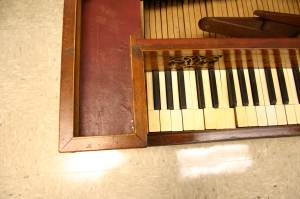
There are hinge holes in the lid with no matching holes in the body. This suggests that the lid is not original. Most of the hinges appear either not to be original or have been moved with sloppily cut mortises.
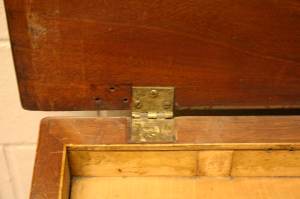
Support blocks (some missing) suggest a missing inner dust cover.

There is evidence of insect damage on the bottom. With the warp across the length, this might indicate that it was stored off its stand on a damp floor for some time. However there is minimal evidence of rust on the iron damper parts.
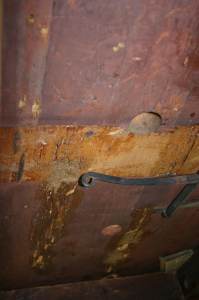
The lid inlay is very similar, but not exactly the same as the side inlays. (There is an additional band.) The satinwood bands have some odd color variations that might only be explainable by the lid being stored in pieces with different exposures to light, or by cobbling together from more than one lid.
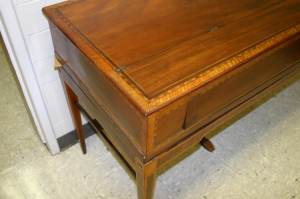
There are a LOT of veneer patches. Some are fairly precise while others seem sloppier.
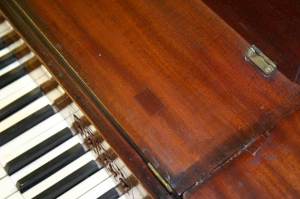
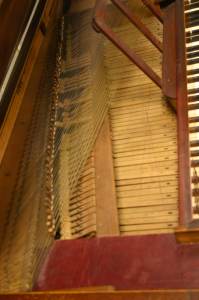

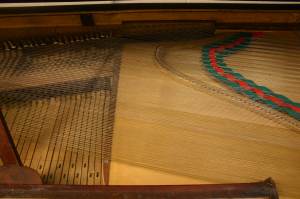
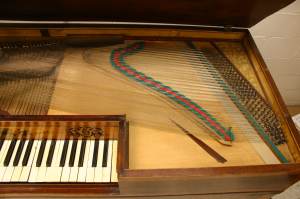
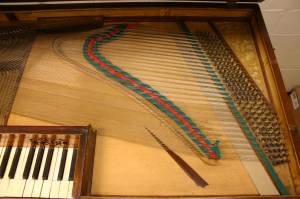
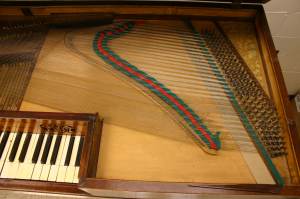
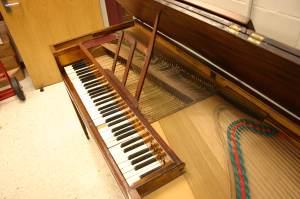
There is a piece of red cloth or leather (I think it's some kind of oilcloth) glued to the board to the left of the keyboard. I suspect this is not original. I would like to remove it as I believe this is where one would most likely find a serial number on this instrument.
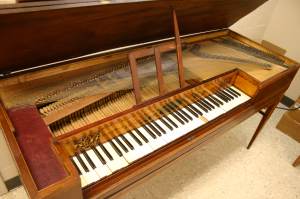
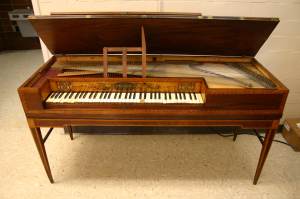
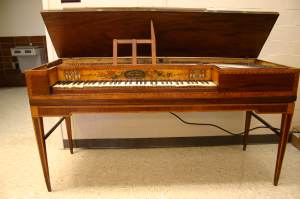
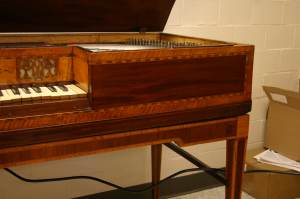
The fretwork on the right side of the name board has been replaced by a crude facsimile. The left side is original.
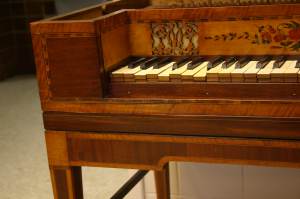
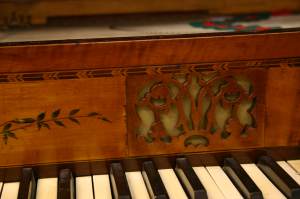
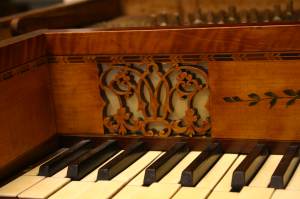
There is a warp along the length as well as a twist like one might commonly see in a lightly built clavichord. It does not sit flat on the stand.
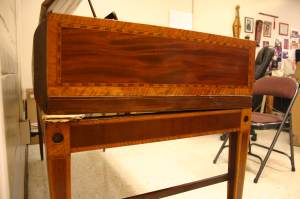
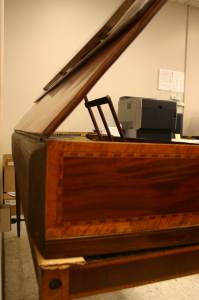
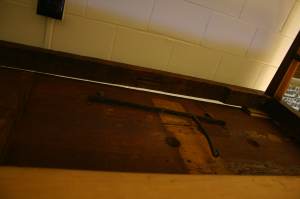
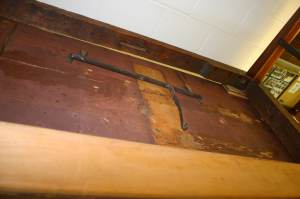
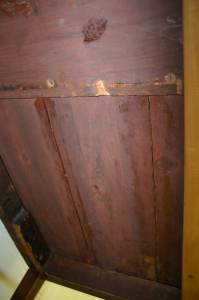
A large plank has been added to the bottom along the front to try and straighten out the warp. This is largely ineffective. Such reinforcement should go in the direction of the strings, but this would interfere with the pedal arrangement.
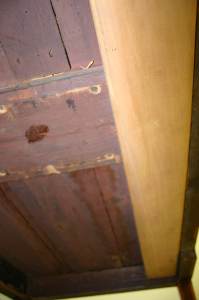
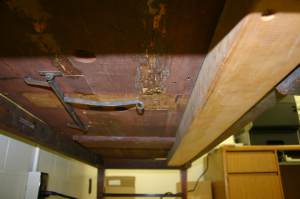
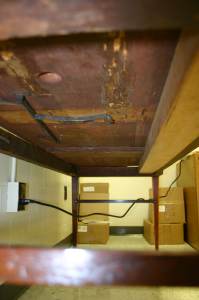
There is a number "76" stamped in the pin block.
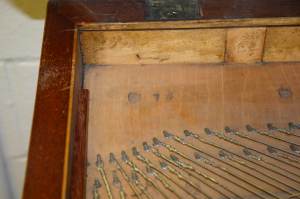
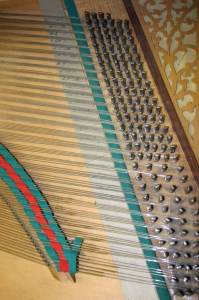
Copyright © 2006 by Dwight Newton. All rights reserved.

© 2001-2008 D.Newton/Mewzik.com